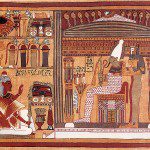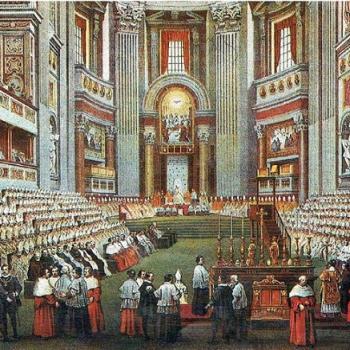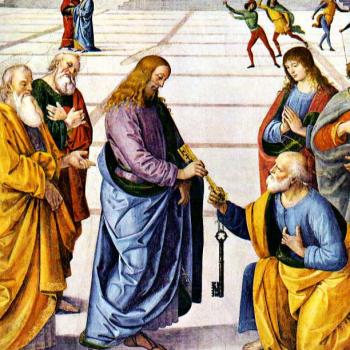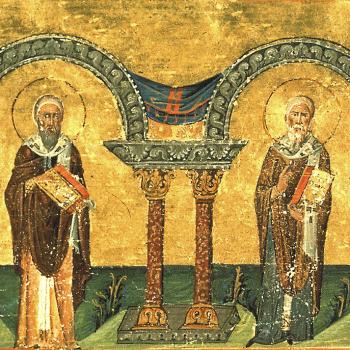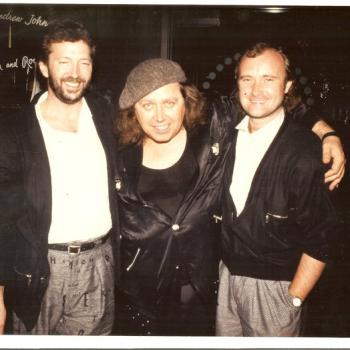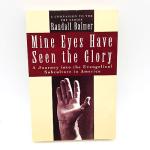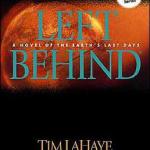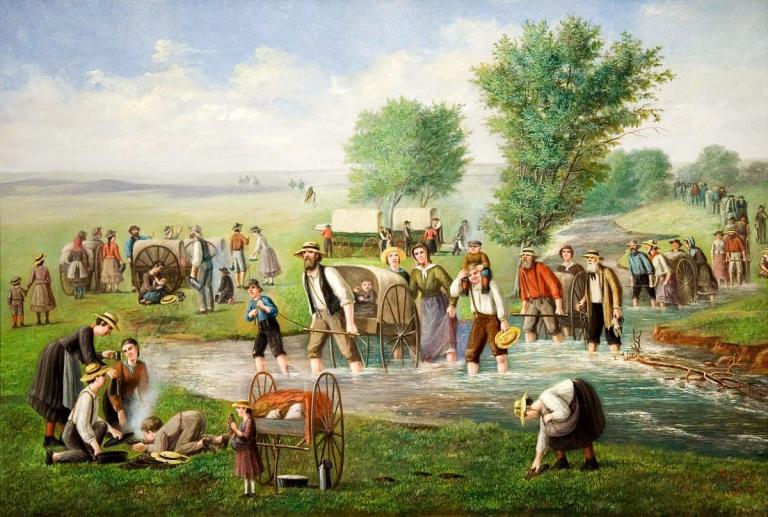
(Wikimedia Commons public domain image)
A solid example of Mormon “Stalinist art”?
Two new items have appeared in Interpreter: A Journal of Latter-day Saint Faith and Scholarship, and I hope that you’ll enjoy them:
“The Anomaly: Elliott West’s Continental Reckoning and its Latter-day Saints,” written by Robert Swanson
Review of Elliott West, Continental Reckoning: The American West in the Age of Expansion (Lincoln: University of Nebraska Press, 2023). 704 pages, $39.95 (hardcover).
Abstract: This review explores how Latter-day Saints are portrayed in a new landmark history of the American West. Noting the author’s generally accurate portrayal of the Saints, this review focuses on some areas that were missing in this Bancroft Prize winning book that has numerous implications for Latter-day Saint studies.
“Uncanonized Revelations,” written by Kent P. Jackson
Review of Stephen O. Smoot and Brian C. Passantino, eds., Joseph Smith’s Uncanonized Revelations (Provo, UT: Religious Studies Center; Salt Lake City: Deseret Book, 2024). 184 pages, $24.99 (hardcover).
Abstract: In an important new volume, we now have easy access to revelations received by the Prophet Joseph Smith that were not included in the Doctrine and Covenants.

I call attention here to a couple of the sessions that will be held this coming week at the annual FAIR LDS conference, which runs on Thursday and Friday.
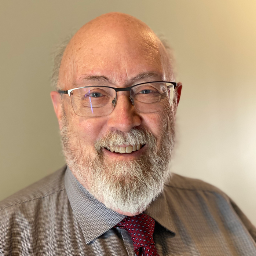
Session 3: Appreciating Brother Brigham
President, The Interpreter Foundation
Brigham Young has always taken heavy criticism, and denigrating him seems to be back in fashion — even among some members of his church. I want to raise a voice on his behalf.
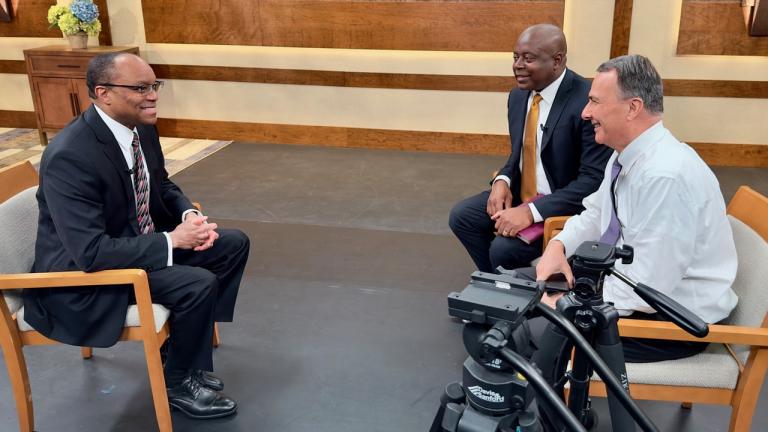
Description
Panel by The Interpreter Foundation
Presenters: Jeffrey Bradshaw and Junior Banza
The Interpreter Foundation is a nonprofit educational organization focused on the scriptures of The Church of Jesus Christ of Latter-day Saints (the Book of Mormon, the Pearl of Great Price, the Bible, and the Doctrine and Covenants), early Latter-day Saint history, and related subjects.
“Not By Bread Alone: Stories of the Saints in Africa” is a film series exploring the lives of African Saints who thirsted for tranquility and found personal peace in the gospel of Jesus Christ. Episodes in the series will be published over the next few years, starting in 2024. Video shorts will be posted monthly.
The film series is produced by the Interpreter Foundation, a non-profit organization whose aim is to support the Church through scholarship. The point of contact for the project is Jeffrey M. Bradshaw. We are working in association with Redbrick Filmworks, an award-winning Latter-day Saint producer of inspirational media.

(Wikimedia Commons public domain photograph)
My interest was piqued last night by reading Alexander Batthyány, “Letter to the Editor: Terminal Lucidity: The Need for Accuracy and Integrity,” Journal of Near-Death Studies 41/1 (2023): 67-71.
Dr. Batthyány is the Director and Chair of the Institute for Theoretical Psychology and Personalist Studies at the Pázmány Péter Catholic University in Budapest, Hungary, and his letter is a complaint that, in a recently published book, Raymond Moody and Paul Perry have misrepresented a significant element of what science knows about the phenomenon of “terminal lucidity.” And, from what I understand and can see, his complaint seems justified.
I have a particular personal interest, though, in that phenomenon, knowing of a striking case of it in my wife’s own family involving someone that I actually (briefly) knew. Here, I share a pair of quotations from Dr. Batthyány’s letter:
In the recently published book Proof of Life After Life: 7 Reasons to Believe There Is an Afterlife, written by Raymond Moody, Jr., MD, PhD, and Paul Perry (2023), an entire chapter is dedicated to the topic of terminal lucidity (TL). In TL, individuals with severe cognitive impairments — such as one of the dementias — unexpectedly experience a brief period of mental clarity shortly before death; these are episodes “of unexpected, spontaneous, meaningful, and relevant communication or connectedness in a patient who is assumed to have permanently lost the capacity for coherent verbal or behavior interaction due to a progressive and pathophysiologic dementing process” (Mashour et al., 2019). This working definition was the consensus of an interdisciplinary expert research workshop and panel on paradoxical (or terminal) lucidity held at the National Institute on Aging in Bethesda, MD, in the summer of 2018; I was a member of that panel. We reached this agreement after reviewing and analyzing case histories, medical histories, and outcomes of TL episodes (Eldadah et al., 2019). In our workshop and in the resulting White Paper, we also highlighted the extensive parallels between TL and near-death experiences. Both phenomena suggest an expanded view not only of the mind near or at death but also of the overall brain-mind relationship, insofar as in both cases coherent mental activity can be observed alongside significantly reduced or impaired brain foundation at or near death. (67)
[T]erminal lucidity pertains to unanticipated moments of clarity in patients whose pathophysiological conditions would typically preclude any higher cognitive or mental functions; most of these patients suffered from dementia or other cognitive impairments, yet, nearing death, became lucid and communicative again, if only for a brief period of time. (69)
The passage in the book by Moody and Perry that Batthyány cites and to which he specifically objects is found on their page ten:
Terminal lucidity (TL) is defined as a flash of lucidity and vigor that takes place shortly before death. It sometimes happens in the absence of detectable brain activity. In other words, those who are brain-dead can suddenly re-emerge from apparent death, shocking their loved ones and hospital staff with a return befitting Lazarus, albeit brief. Patients who are brain-dead make a profound temporary come back, speaking clearly about specific things (family matters, for instance) despite EEGs showing that the brain itself is not functioning. It is as though the brain has been bypassed by a consciousness that does not require great matter. (cited on 68)
Dr. Batthyány, however, says that neither he nor anybody with whom he has spoken is aware of any instance of terminal lucidity — and there are now approximately 600 documented case studies of the phenomenon — during which the brain activity of the patient was being monitored by instruments. Moreover, he observes, since the patients in question were still breathing, and since their brains were still regulating heart rate and blood pressure, they could not have been fully brain-dead.
Still, he seems open to the idea that the phenomenon of terminal lucidity may offer an important window onto the relationship between mind and brain and even the survival of the human personality beyond death. And I’m inclined to agree. I’ve thought so ever since, not long after my wife and I were married, a case of TL appeared within her family.
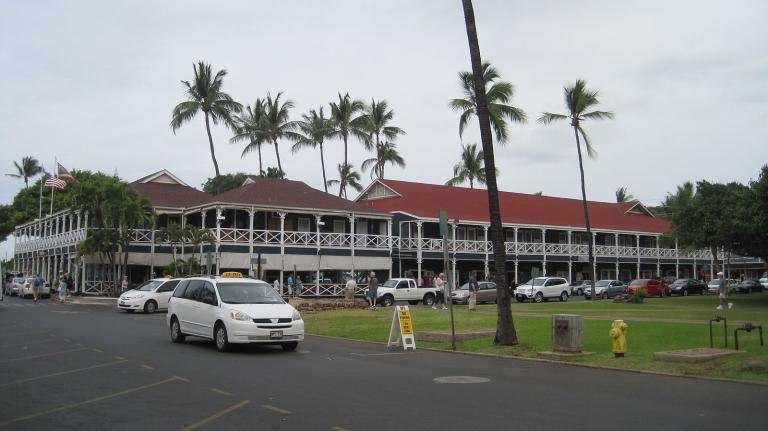
This sorta thing jes’ sorta makes yer blood boil, don’t it? From the Christopher Hitchens Memorial “How Religion Poisons Everything” File™:
Posted from Depoe Bay, Oregon



